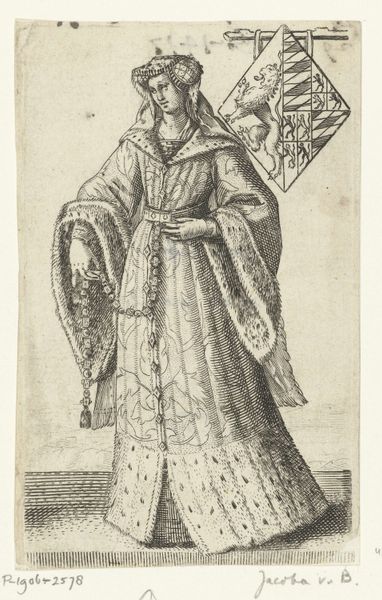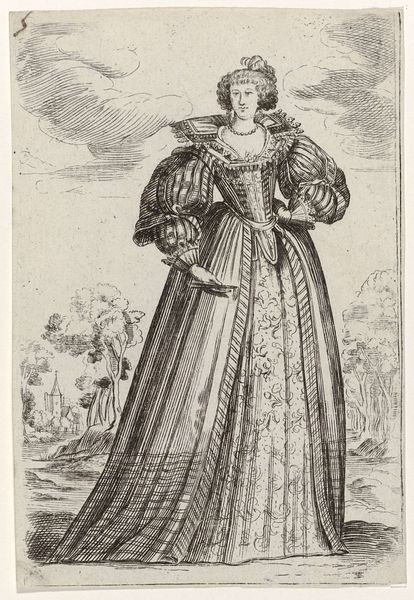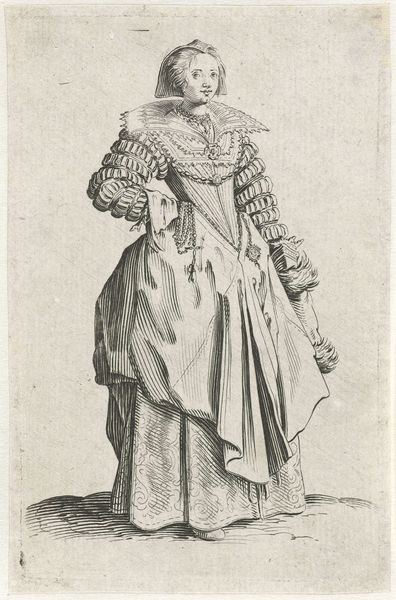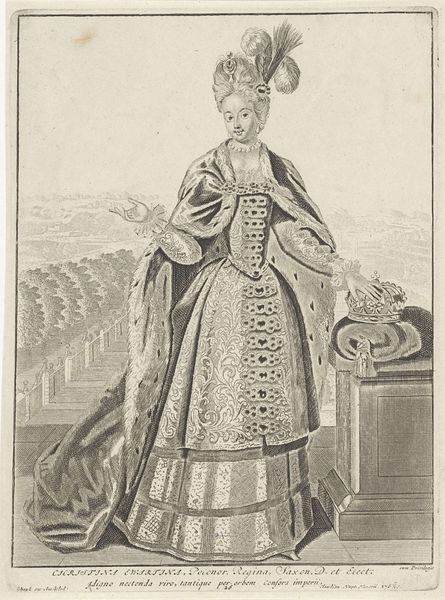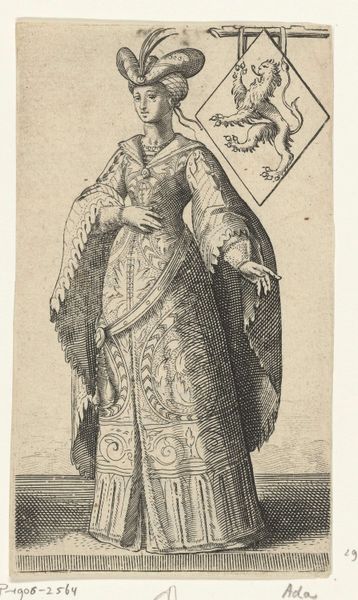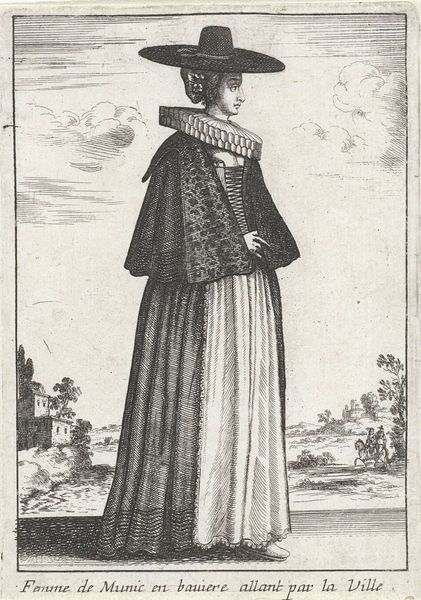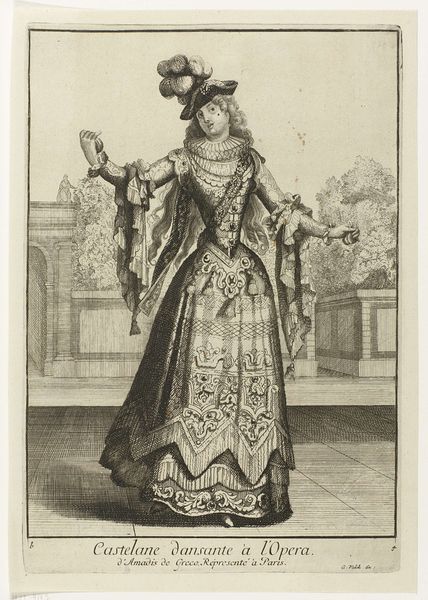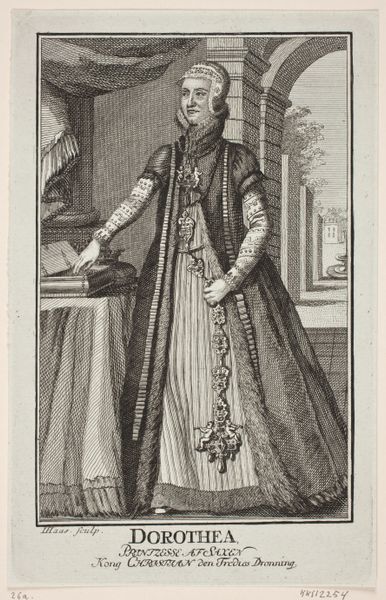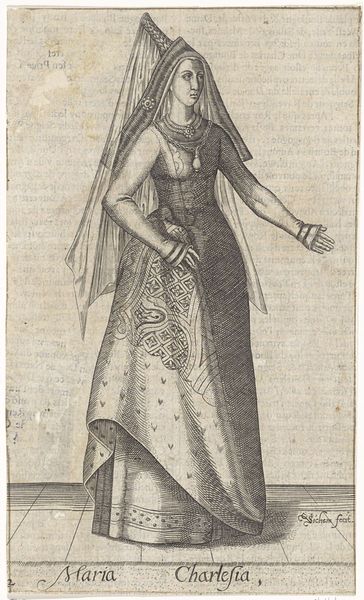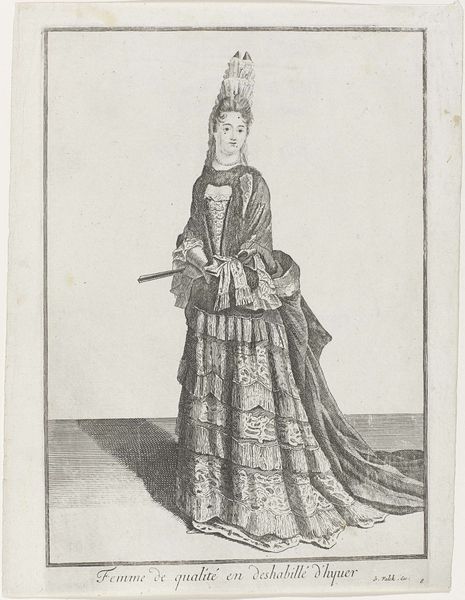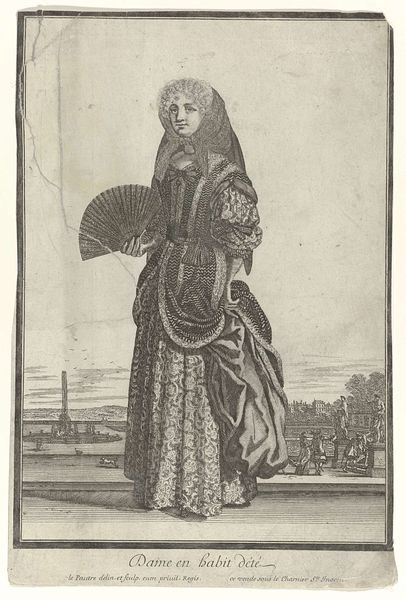
print, engraving
#
portrait
#
baroque
# print
#
old engraving style
#
traditional media
#
figuration
#
engraving
Dimensions: height 258 mm, width 179 mm
Copyright: Rijks Museum: Open Domain
Editor: This is "Portrait of Henriëtte Amalia van Anhalt-Dessau," a print made sometime between 1724 and 1751 by an anonymous artist. The detail is incredible, almost photographic! It gives off an air of self-assuredness. What do you see in this piece? Curator: This portrait offers a fascinating glimpse into the performance of power and identity in the 18th century. Notice how the subject's elaborate gown and formal pose aren't just decorative. How might they communicate her social standing and role within the court? Editor: Well, the ornate dress certainly screams wealth, and the way she holds herself seems very deliberate, very composed. But I guess I'm missing something. Curator: Think about what it meant to be a woman of power in that era. She isn't simply representing herself; she's embodying the authority vested in her, potentially as a Regent. Does the setting play into this construction of power? Editor: It looks like she's on a terrace, perhaps overlooking her lands? The gardens, the vases… all symbols of control and dominion. Curator: Precisely. And what does it mean that this image is a print? The proliferation of her image suggests that she—or those around her—recognised the importance of disseminating her power and image far beyond the court. Editor: That's so interesting! I hadn't considered how the medium itself could contribute to the message. This portrait becomes more than just a picture; it is also propaganda. Curator: Exactly. It's a reminder that portraiture, particularly during this period, was deeply entwined with politics, gender, and the carefully constructed narratives of power. Editor: I'll definitely look at portraits differently now. Seeing them as part of a larger social and political game is incredibly enlightening!
Comments
No comments
Be the first to comment and join the conversation on the ultimate creative platform.
